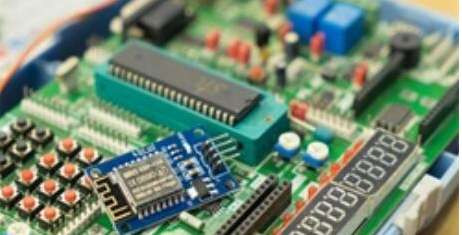What is FPC flexible board
FPC is the abbreviation of FlexiblePrintedCircuit, also known as flexible circuit board, flexible printed circuit board, flexible circuit board, abbreviated as soft board or FPC;
The characteristics of FPC flexible circuit board: FPC flexible circuit board has the characteristics of high wiring density, light weight and thin thickness.
The use of FPC flexible circuit board
FPC flexible circuit boards use electronic products such as mobile phones, notebook computers, PDAs, digital cameras, and LCMs. FPC flexible circuit board is a kind of highly reliable and excellent flexible printed circuit made of polyimide or polyester film as the base material. According to the combination of base material and copper foil, flexible circuit boards can be divided into two types: flexible boards with glue and flexible boards without glue. Among them, the price of the glueless flexible board is much higher than that of the glued flexible board, but its flexibility, the bonding force of the copper foil and the substrate, and the flatness of the pad are also better than the glued flexible board. Therefore, it is generally only used in those occasions with high requirements; due to the high price of flexible boards with glue, most of the flexible boards on the market are still flexible boards with glue.

Since the flexible board is mainly used in occasions that need to be bent, if the design or process is unreasonable, defects such as micro-cracks and open welding are likely to occur. The structure of the flexible circuit board and its special requirements in design and process are as follows:
The structure of FPC flexible board
According to the number of layers, it is divided into single-layer boards, double-layer boards, and multi-layer boards. The structure of the single-layer board is the simplest flexible board. Usually the base material + transparent glue + copper foil is a set of purchased raw materials, and the protective film + transparent glue is another purchased raw material. First, the copper foil needs to be etched and other processes to obtain the required circuits, and the protective film needs to be drilled to expose the corresponding pads. After cleaning, use the rolling method to combine the two. Then the exposed pad part is electroplated with gold or tin for protection. In this way, the slab is ready. Generally, small circuit boards of corresponding shapes are also stamped. There are also solder masks directly printed on the copper foil without a protective film, so the cost will be lower, but the mechanical strength of the circuit board will be worse. Unless the strength requirement is not high but the price needs to be as low as possible, it is best to apply a protective film.
The structure of the double-layer board is that when the circuit is too complicated, the single-layer board cannot be wired or copper foil is needed for grounding shielding, it is necessary to use a double-layer board or even a multilayer board. The most typical difference between a multi-layer board and a single-layer board is the addition of a via structure to connect each layer of copper foil. The first processing technology of general substrate + transparent glue + copper foil is to make vias. First drill holes on the substrate and copper foil, and then plate a certain thickness of copper after cleaning, and the vias are completed. The subsequent production process is almost the same as the single-layer board.
Features of FPC flexible board
The FPC flexible board can be freely bent, folded, and wound, and can be moved and stretched freely in three-dimensional space.
FPC flexible board has good heat dissipation performance, and F-PC can be used to reduce the volume.
The FPC flexible board can achieve lightweight, miniaturization, and thinning, so as to achieve the integration of component devices and wire connections.
Application areas of FPC flexible boards include: MP3, MP4 players, portable CD players, household VCD, DVD, digital cameras, mobile phones and mobile phone batteries, medical, automotive and aerospace fields.
The origin of the name FPC flexible board
Because of its special functions, it is more and more widely used, and it is becoming an important variety of epoxy resin-based copper clad laminates. But our country started late and has yet to catch up. Epoxy flexible printed circuit boards have experienced more than 30 years of development since their industrial production. Since the beginning of the 1970s, it has entered a truly industrialized mass production. Until the late 1980s, due to the advent and application of a new type of polyimide film material, flexible printed circuit boards made the FPC appear adhesive-free. FPC (generally referred to as "two-layer FPC"). In the 1990s, a photosensitive cover film corresponding to high-density circuits was developed in the world, which caused a great change in the design of FPC. Due to the development of new application areas, the concept of its product form has undergone a lot of changes, and it has been expanded to include a larger range of substrates for TAB and COB. The high-density FPC that emerged in the second half of the 1990s began to enter large-scale industrial production. Its circuit graphics are rapidly developing to a more subtle level, and the market demand for high-density FPC is also growing rapidly; FPC can also be called: flexible circuit board; PCB is called hard board!